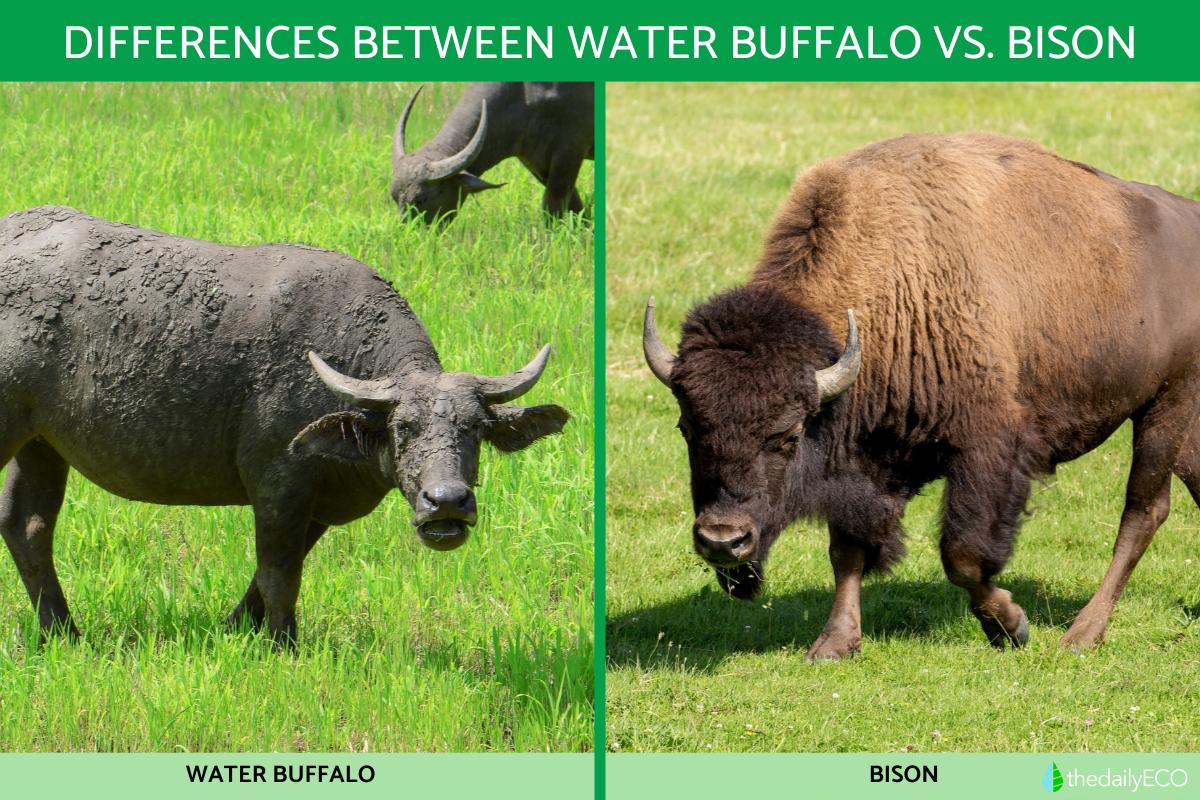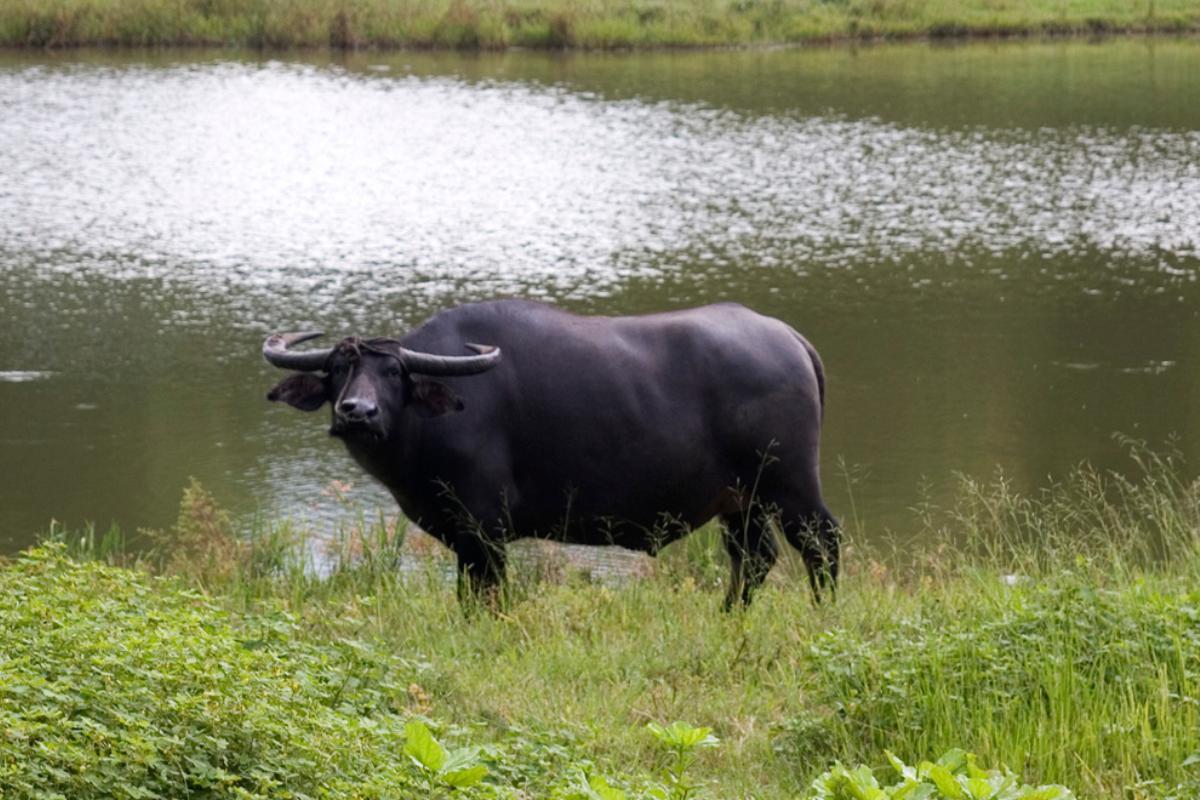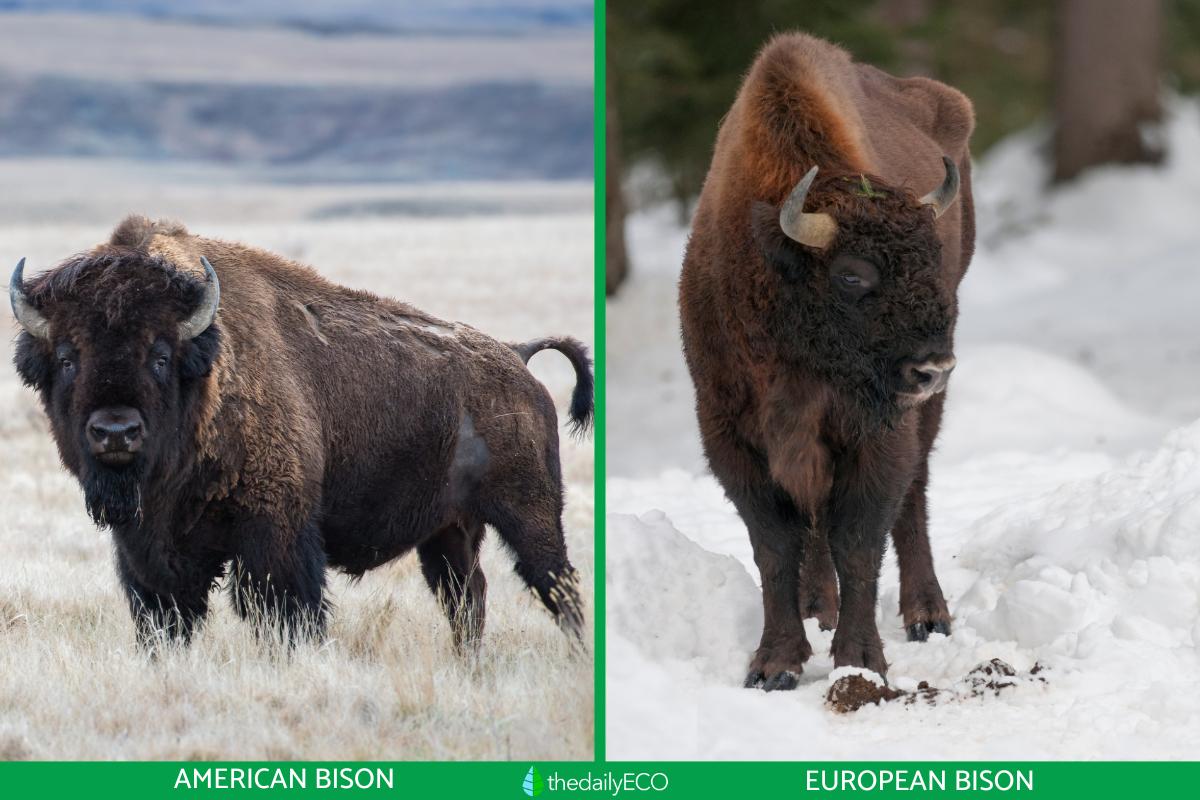Differences Between Water Bison vs. Buffalo


Among the differences between the water buffalo (Bubalus bubalis) and the bison (Bison sp.), greatly different geographic populations and habitat preferences stand out as some of the most significant. Other differences include the length of horn, density of fur and many others. thedailyECO provides a guide to the differences between water buffalo vs. bison in this article. We do so by providing detailed descriptions of both animals, a comparison between the two and photos to help better distinguish between these two bovine animals.
What is a water buffalo?
The domestic water buffalo, Asian water buffalo or, simply, the water buffalo, this terrestrial mammal belongs to the species Bubalus bubalis, genus of the order Artiodactyla and the family Bovidae. This family also contains the bison, as well as sheep, goats, antelopes, cattle and others. We can see a photo of the water buffalo below.
The origin of the water buffalo is believed to date back to India, with fossil records indicating its presence about 60,000 years BCE. The domestication of these imposing animals would have occurred approximately 3,000 years BCE in regions such as India, Iraq and China. Adapted to warm, humid climates, water buffaloes prefer habitats such as deep waters and mudflats, where they feed mainly on aquatic plants. During times of flooding, it is common to see them grazing while partially submerged.
This species is of great importance globally, providing valuable resources such as meat and milk. A buffalo's physical appearance is characterized by having little or no hair, as true horns which are usually permanent and can grow throughout their life. Although not branched, the horns are usually curved and are more developed in males which use them to fight and attack other males. In females, horns are usually present, but are less prominent.
Both water buffalo and bison are ruminant animals, something about which you can learn more in our article asking what are ruminant animals?

What is a bison?
The bison refers to various animals belonging to the genus Bison. Like buffalo, they are members of the order Artiodactyl and the family Bovidae. Two of the most recognizable bison are the American bison (Bison bison) and the European bison (Bison bonasus).
In the past, the American bison ranged in large herds across the plains of North America in Mexico, the United States and Canada. Their populations have declined dramatically due to the destruction and fragmentation of grasslands, proliferation of disease and hunting. The value of their hides was high, leading to the slaughter of thousands of animals. Current conservation efforts are being carried out to recover their populations and ecological role.
The European bison is the largest land mammal in Europe, living mainly in deciduous and coniferous forests. It feeds on all types of plant material such as low foliage, grass, bark and tender branches. They are highly endangered animals and seeing one of these bison is a rarity. One of these rare sightings is pictured in the photo below which compares American vs. European bison.
Bison have a thick, dark brown coat during the winter that becomes lighter in the summer. Both males and females have small and curved horns, which they use during the breeding season in fights with other males. They also use them as a method of defense. Although they are very similar species, the European bison is more difficult to domesticate, is lighter on average, tends to graze less and migrate more than its American counterpart.

Differences between water buffalo vs. bison
Now we have the characteristics of bison vs. water buffalo individually, we can make a comparison between them by highlighting their differences:
- Origin and distribution: the buffalo is native to the Asian continent, especially regions such as India, Southeast Asia and parts of Africa. The bison is native to North America (American bison) and Europe (European bison). For this reason, you will never see water buffalo and bison together in the wild.
- Habitat: buffalo prefer warm, moist, swampy habitats such as rivers, lakes and mudflats. In contrast, buffalo primarily inhabit prairies, grasslands and open forests, being better adapted to more temperate and cold climates.
- Physical appearance: water buffalo have larger, longer and more curved horns, with a generally sparse or short coat. Bison have a dense, thick coat especially in winter with shorter and smaller horns. You can see these differences clearly in the photo below.
- Size and weight: water buffaloes are generally larger and heavier, while bison are generally lighter in comparison. It should be noted that American bison are more robust than their European counterparts with a more compact and muscular appearance.
- Domestication: buffaloes have been highly domesticated, especially in Asia, where they are commonly used for agriculture, transport and dairy production. Bison are less domesticated. Although there are efforts to raise them on farms, their domestication has never been as widespread as that of the buffalo.
- Economic importance: water buffalo are central to the agricultural economy of many Asian regions, especially as a source of meat, milk, and labor. Bison have significant historical and cultural value, especially in North America. While they are also valued for their meat today, their limited population numbers being acquiring some is rare.
Discover more about bovine characteristics in our article asking do cows have teeth of the top of their mouths?

Similarities between water buffalo and bison
The reason many people ask about the differences between water buffalo and bison is that they are often confused with each other. This is thanks to the following similarities:
- Taxonomic classification: both species of even-toed ungulate mammals belong to the order Artiodactyla and the family Bovidae.
- Body structure: both water buffalo and bison have a robust and muscular build, with bulky bodies and strong legs that allow them to support their great weight.
- Horns: both bovids have permanent and unbranched horns, which are used as a method of defense and to compete for leadership within their herds.
- Diet: they are herbivores, feeding mainly on grasses, herbs, reeds and aquatic plants.
- Social behavior: they are social animals that live in herds. This organization provides them with protection from predators and facilitates the search for food.
Now you know the similarities and differences between water buffalo and bison, you may want to know more about what are even-toed ungulates?
If you want to read similar articles to Differences Between Water Bison vs. Buffalo, we recommend you visit our Facts about animals category.
- National Institute of Agricultural Technology. (2006). “Productive characteristics of the buffalo in Argentina”.
https://www.produccion-animal.com.ar/informacion_tecnica/razas_de_bufalos/20-productividad_bufalo.pdf - List, R., & Solis, B. V. (n.d.). Diagnosis of the current status of the American bison (Bison bison) population on the border between Mexico and the United States and recommendations for its conservation and management.








